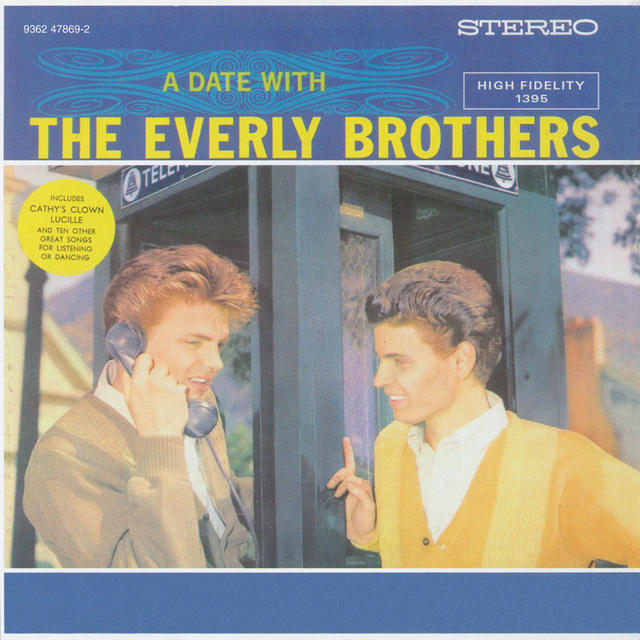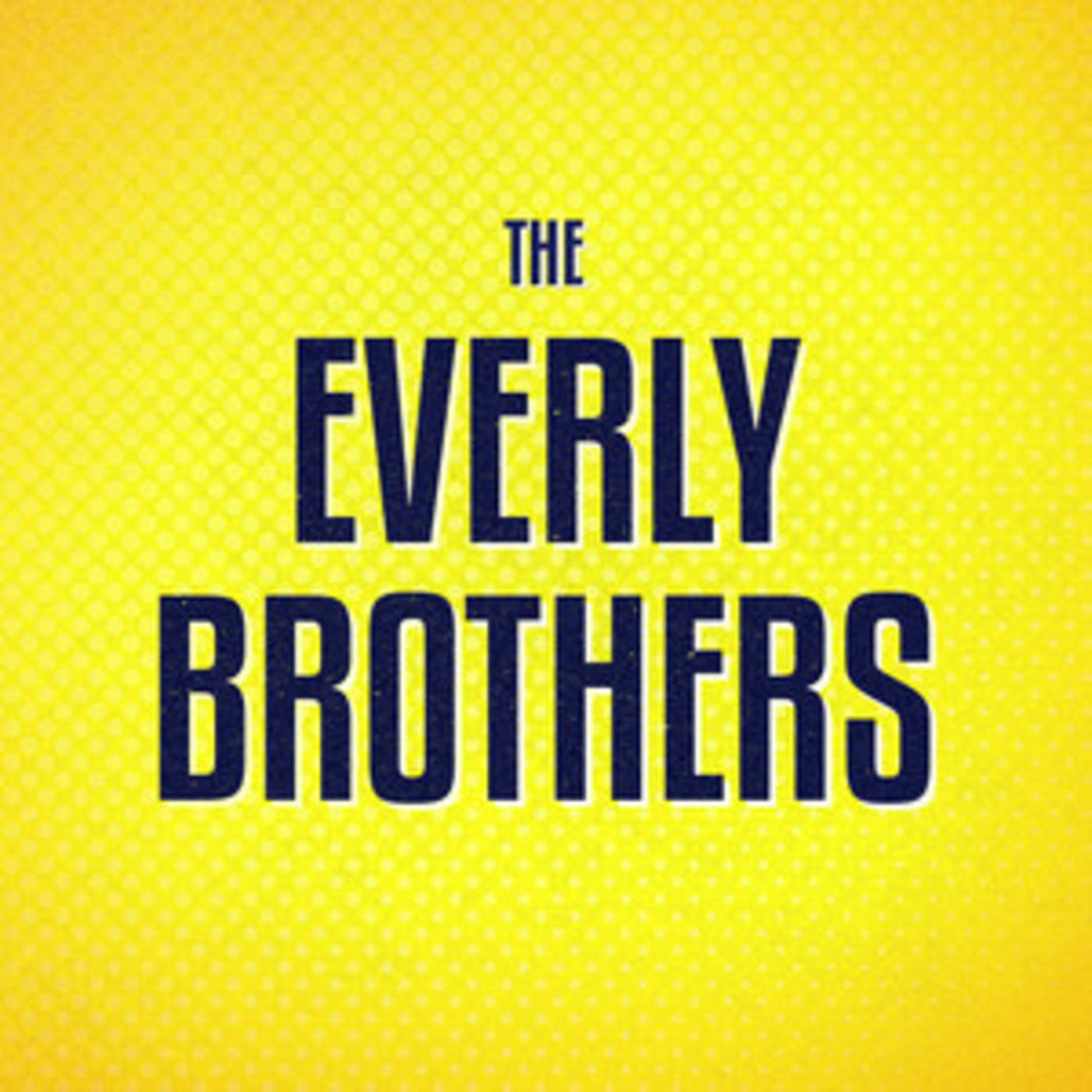THE ONE AFTER THE BIG ONE: Everly Brothers, A DATE WITH THE EVERLY BROTHERS

Even though their hits are indelible examples of the finest American pop music of the ‘50s and early ‘60s, the Everly Brothers’ influence is sometimes overlooked as time has proceeded from the era in which they achieved their greatest popularity. Let this be clear: the sounds we take for granted in the most resonant music of the last 50 or 60 years – namely the vocal harmonies of acts like the Beatles, the Byrds, the Beach Boys and hundreds of others – would have simply been inconceivable without entwined voices of Kentucky natives Phil and Don Everly. They showed us how to do it, and generations are indebted to them.
It seems like hyperbole – of course, there had been harmony singers before the Everlys hit the charts with “Bye Bye Love” in 1957. But their approach to their vocals – their close harmonies, riding on sturdy rhythmic beds of acoustic guitar and basic rock and country instrumentation – had a widespread effect on some of the most influential performers of each successive generation. Gram Parsons and Emmylou Harris’ performances on their recordings are heavily influenced by the Everlys; Simon and Garfunkel updated the duo’s sound in the late ‘60s; Linda Ronstadt had one of her biggest hits with their “When Will I Be Loved”; Robert Plant and Allison Krauss covered them on their Grammy-winning RAISING SAND; Green Day’s Billie Joe Armstrong and Norah Jones made an entire album of Everlys covers – in 2013!
The Everly Brothers’s stint on Warner Brothers coincided with a creatively fertile period. They hit the Top Ten out of the gate, with 1960’s classic IT’S EVERLY TIME, and followed it up just five months later with A DATE WITH THE EVERLY BROTHERS, one of their finest albums.
The record’s best-known song is the last song on Side 2: “Cathy’s Clown.” It was the first song co-written by the brothers to be a hit, and it’s easy to hear why – the effortless high harmony that Phil provides, winding around Don’s slightly lower melody part. The Beatles would take a similar harmonic approach on “Please Please Me” three years later and launch a cultural phenomenon; on “Cathy’s Clown,” it’s just a representation of heartbreak, and it’s exquisite.
You can also hear the proto-Beatles harmonies on “Always It’s You,” but this time, it’s a slow dance, a long stare into the middle distance, or a daydream (and a beautiful one at that). A DATE WITH THE EVERLY BROTHERS also has the first recording of the Boudleaux Bryant classic “Love Hurts,” here presented in a more up-tempo arrangement than the more familiar ones (Gram and Emmylou, Nazareth). And speaking of familiar, their take on Jimmy Reed’s “Baby What You Want Me to Do” is both instantly recognizable and completely unique, its shuffle slowed so those voices shine through.
These are just a few examples of what makes A DATE WITH THE EVERLY BROTHERS such a special record, well worth a listen, even six or so decades on.
For more information, click the buttons below:

